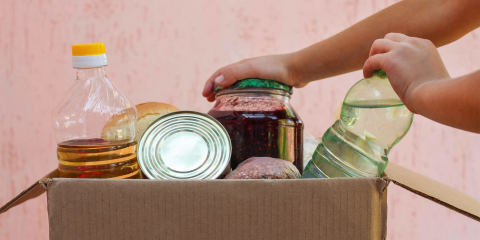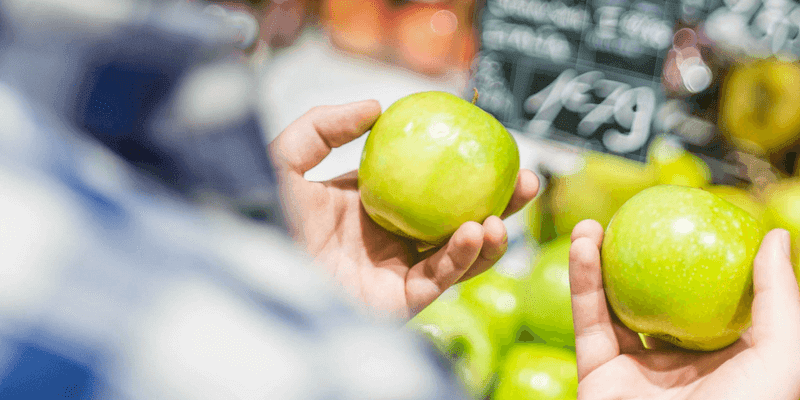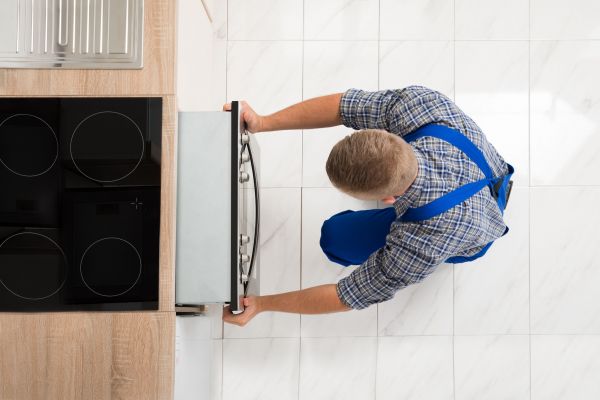Any other time, a fridge full of fresh fruits and vegetables and all your kitchen staples means you can quickly whip up any dish to satisfy your current craving, but when you’re coming up on your final days in your current home, a fridge full of anything can present an unexpected complication. The fridge is one of the most commonly overlooked components of kitchen packing, but a little advanced planning can help you tackle your food stash, minimize waste, and make your move a little easier.
Professional movers and shippers won’t move food because of the risk of attracting rodents and pests, so if you have food to relocate, you’ll need to pack and move it yourself. Here’s how you can empty out your fridge and pantry before you move without tossing it all in the garbage or hauling it to your new place.
Take Inventory
Approximately one month before you move, go through your pantry, cupboards, drawers, fridge, and freezer to figure out what items you have available. Make a list of every single thing—this will make it easier to figure out what you’re going to do with all that food. Organize your supplies into three categories:
- If you’re moving yourself, items that are lightweight and easy to transport that can be moved if necessary, such as pasta, cereals, rice, and other dried foods like baking supplies or spices.
- Heavy, frozen, or fresh items that need to be used up before you move, such as cans, ice cream, or vegetables.
- Condiments that can be packed into a cooler for short drives. For long distance moves, it will be easier to toss these items, or try to use them up before you go.
Break these down further into categories like proteins, vegetables, and sauces, and note how long these items will keep before you start crafting your meal plan.
Make a Meal Plan
Now that you have an inventory of all the food that’s available to you, you can develop a meal plan. Group together items and ingredients into breakfast, lunch, dinner, and snacks, and figure out your menu options leading up to your move. Here are some tips:
- Start with perishable items and products that won’t transport well in your car.
- Batch cook and portion out individual servings so that you have easy access to meals when you need them. Big recipes that produce leftovers make it easier to prepare quick and healthy meals while you’re busy packing.
- Choose healthy and nutritious meals to keep your energy up.
- If you’re struggling for ideas, sandwiches, pasta, stir fry, soup, chili, and egg dishes like omelettes or frittatas are all easy-to-make meals that can accommodate a variety of ingredients and flavors.
- Don’t forget to factor in a few dinners out or take-out options. It doesn’t hurt to treat yourself to something tasty during this stressful time, but avoid making take-out your go to.
If you have items that don’t quite fit with your current cooking repertoire, look online for recipes or consider a trip to the grocery store—just keep our next tip in mind!
Shop Strategically
It’s okay to pick up a few key ingredients to make a meal if they’re not currently in your cabinets, just don’t buy any more than you will use before the move. Start by creating a shopping list and sticking to it while you’re at the store. Avoid tempting treats and buying in bulk and only pick up what’s on your list.
How to Pack Food
Regardless of how well you craft your meal plan, you’re probably going to have items left over, and there will almost certainly be some stuff you aren’t willing to part with. Moving and LTL shipping companies won’t move food because it can attract rodents and other undesirable pests, so if you’ve hired movers or shippers and you have food you can’t use up or don’t want to toss, pack a cooler and carry it with you in your vehicle. Try these tips for packing up your leftover food:
- Use small to medium sized boxes.
- Place spillable items like olive oil and flour in resealable bags.
- Wrap glass containers with bubble wrap.
- Label all your food boxes so you know to unpack them first. Make sure you label where they belong and what’s in them, otherwise they could end up attracting mice or going bad in the attic by mistake.
- Spread out heavy items like cans rather than packing them all in one box.
- Keep heavier items on the bottom of boxes and place lighter items on top.
- Seal all boxes and containers with tape.
Just be aware: Leaving food out of the fridge or improperly storing food in transit can cause it to spoil—or worse, give you food poisoning—so make sure you pack it well with lots of ice! Ideally, the only food items you’ll move are expensive or irreplaceable goods, such as top-shelf spirits.
Give Away & Get Rid of The Rest
With a meal plan in place and the items you want to keep packed up and ready to move in your own vehicle, you can figure out what you’re going to do with all the leftover items:
- Canned goods and other non-perishable items that you aren’t able to use up can be donated to local food banks, shelters, or charities rather than hauling them to your new home
- If you keep a fully-stocked bar, moving all those bottles can be difficult. They’re breakable and usually heavy, so unless they’re valuable vintages or top-shelf spirits, you might be better off using them up by hosting a going away party or giving them to friends, family, and neighbors.
- Opened bags of snacks can be kept in the car for something to nosh on on moving day, but don’t hesitate to throw out opened frozen food or condiments that can’t be donated and aren’t worth saving.
A Moveable Feast
Planning your meals in advance and accounting for the extra food you can’t use up is an easy way to make the weeks before your move a little easier. It’s one less thing for you to worry about when you’re short on time and have a million other things going on.





